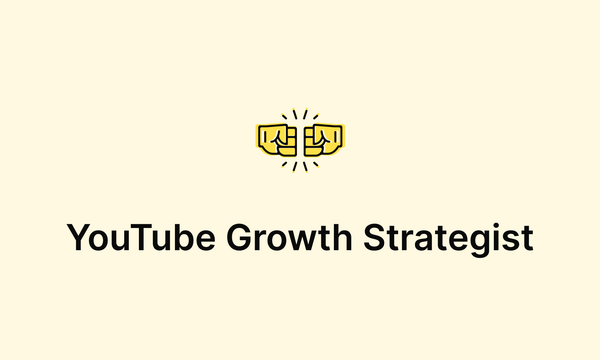What makes a revenue stream sustainable

When creators talk about making more money, the conversation often starts with what’s possible: bigger brand deals, new product lines, ad revenue, subscriptions, courses, and affiliate links. But long-term success doesn’t come from chasing what’s possible. It comes from understanding what’s sustainable.
Sustainable revenue doesn’t just show up. It’s built. And it’s built by being intentional about how money comes in, what it costs to maintain, and how much control you actually have over it.
The difference between income and sustainability
A revenue stream might be profitable, but that doesn’t automatically make it sustainable. Sponsorships, for example, can bring in significant income quickly. Still, if every deal requires a new negotiation, a custom deliverable, and a tight turnaround, the cost of earning that income is high. The same goes for launching a new product or running a high-effort campaign. If the return depends on you being always on, constantly selling, or producing at your maximum capacity, it’s not built to last.
Sustainability isn’t just about passive income. It’s about predictability, scalability, and alignment. It’s about building revenue streams that don’t just work once but continue to deliver value without burning you out or pulling you away from your core creative work.
So, what makes a revenue stream sustainable?
First, it needs to be repeatable. That doesn’t mean it’s completely hands-off, but it should be structured in a way that you can deliver it consistently without starting from scratch every time. A streamlined brand partnership system, an evergreen affiliate strategy, or a content-driven digital product can all fit this model.
Second, it needs to be cost-aware. That means knowing what it takes to maintain the stream, both in terms of time and actual expense. High-margin revenue allows you to reinvest, outsource, or even step back when needed. Low-margin revenue can work, but only if it doesn’t dominate your time and energy.
Third, it needs to be audience-aligned. Sustainable revenue is rooted in trust. If you’re promoting products your audience doesn’t care about or launching offers that don’t match their needs, you may see short-term gains, but long-term traction will be difficult. The more your revenue is tied to real audience value, the more stable it becomes.
And finally, it needs to be resilient. That means you have some control over it. Platform revenue can be powerful, but it’s also unpredictable. Building in direct revenue, whether that’s through your products, services, or community, adds a layer of stability that algorithm-driven income can’t always provide.
This is about building for the long term.
The goal isn’t just to monetize everything. It’s to create a business model that doesn’t collapse under its weight. That means making decisions based on effort, return, and alignment, not just hype or what’s worked for someone else.
A sustainable revenue stream gives you space. It gives you leverage. It also allows you to focus on the parts of the work that matter most to you.
Need help evaluating your revenue mix?
Friends We Trust connects creators with financial strategists and business advisors who understand the unique realities of creative work. If you’re trying to move from short-term wins to long-term growth, we’ll help you identify what’s working, what’s costing too much, and where you have room to build smarter.




